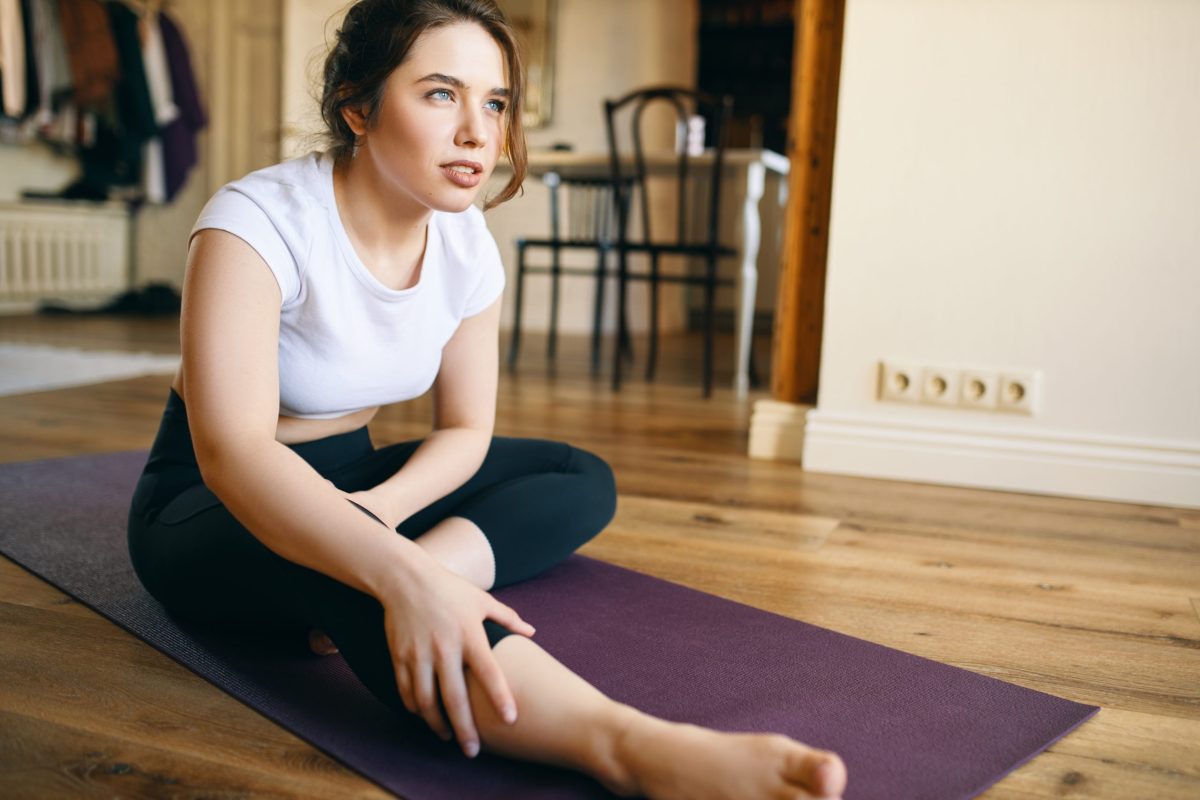Exercises to Stretch Hamstrings
Your hamstring muscles are important to both your leg strength and your body’s trunk but they are frequently underworked and overused, leading to a sensation of tightness and inflexibility and the risk of injury.
Learn what causes hamstring tightness and what you can do to strengthen these muscles and prevent hamstring muscle issues.
Learn the Basics of Your Hamstring Muscles
Your hamstrings are a group of thigh muscles that are located in the back of each leg and run from your knees to your hips. The hamstrings include three muscles:
- Bicep femoris
- Semitendinosus
- Semimembranosus
This hamstring muscle group primarily helps you flex your leg—that is, they help you bend your knee and pull your foot toward your butt. That’s the opposite of the quadriceps (on the front of your thighs), which help you extend your leg.
But both sets of muscles work closely together and help nearby muscles, including your gluteal muscles—a.k.a. your glutes—and your lower back.
Hamstrings are also involved in extending and rotating your hip joint. With their impact on these critical and commonly used movements, hamstrings are directly involved in a wide range of physical activities:
- Walking and running
- Bending over
- Lifting objects
- Sitting down and standing up
- Climbing up and downstairs
- Dancing
- Sports
Because the hamstrings are involved in so many movements and activities, hamstring tightness can be particularly problematic. Tight hamstrings can make it difficult or painful to do common things like walking up and downstairs, and tightness can put these large muscles at risk of injury.
Now, explore what causes hamstring tightness to understand how to prevent it.
Common Causes of Hamstring Tightness
Sitting too much is bad for your body for many reasons, and one of those reasons is that it contributes to tight hamstrings.
Your glutes are extremely important large muscles, but they too often become weak when you sit for long periods. Sitting effectively turns off your glutes, according to Harvard Health Publishing.
If your job involves sitting for much of the day and you don’t regularly exercise your glutes, there’s a good chance those muscles are weaker than they should be. Weak glutes put extra stress on your hamstrings during movements like standing, squatting, and propelling your body forward.
Overworking your hamstrings can also cause tightness. If you don’t stretch after a tough gym session or athletic event, your hamstrings and other muscles may tighten up. That’s why the post-workout stretch is just as important as the warm-up.
Effects of Tight Hamstrings on Your Body
Chronically tight hamstrings have a negative effect on your range of motion. When your hamstrings feel tight, it’s more difficult to stretch and move easily while you’re putting stress on them. While being able to touch your toes isn’t a universal sign of good flexibility, struggling to bend over could indicate tight hamstrings.
Hamstring flexibility is also key to maintaining proper posture. Tight hamstrings can lead to poor posture and musculoskeletal pain, according to a 2019 study in the South African Journal of Physiotherapy.
Another major effect of tight hamstrings is hindered athletic performance. Many different kinds of athletes, from runners and powerlifters to swimmers and dancers, depend on their hamstrings. Tightness in those muscles can make it difficult to practice and perform a sport.
Hamstring Injuries: What Does “Pulling a Hamstring” Mean?
Tight hamstrings increase your risk of experiencing a hamstring injury.
Hamstring injuries are the most common injuries in sports, according to the Cleveland Clinic. When people talk about pulling a hamstring, they’re really referring to overstretching the hamstring muscles. This is a relatively minor injury, while partial and complete hamstring tears are more serious and may make it difficult to use the muscles.
Often, hamstring injuries are the result of fast acceleration when running or doing intensive work in a squat position. Another study, published in the British Journal of Sports Medicine, found that hamstring injuries were the most common type of injury experienced by athletes at international championships over an 8-year period.
Even something not related to sports—like chasing some papers that suddenly blow away in the wind—can cause a hamstring strain.
Effective Stretches for Tight Hamstrings
Regular stretching before (and after) exercise is a great way to reduce hamstring tightness.
It’s important to warm up your muscles before trying to stretch them. If you’ve just been sitting for hours, take a short walk, use an elliptical machine, or start with dynamic stretching exercises like jumping jacks and leg swings before you move on to static stretches or hamstring exercises.
Then, make it a habit to do the following leg movements and stretches.
Seated Hamstring Stretch
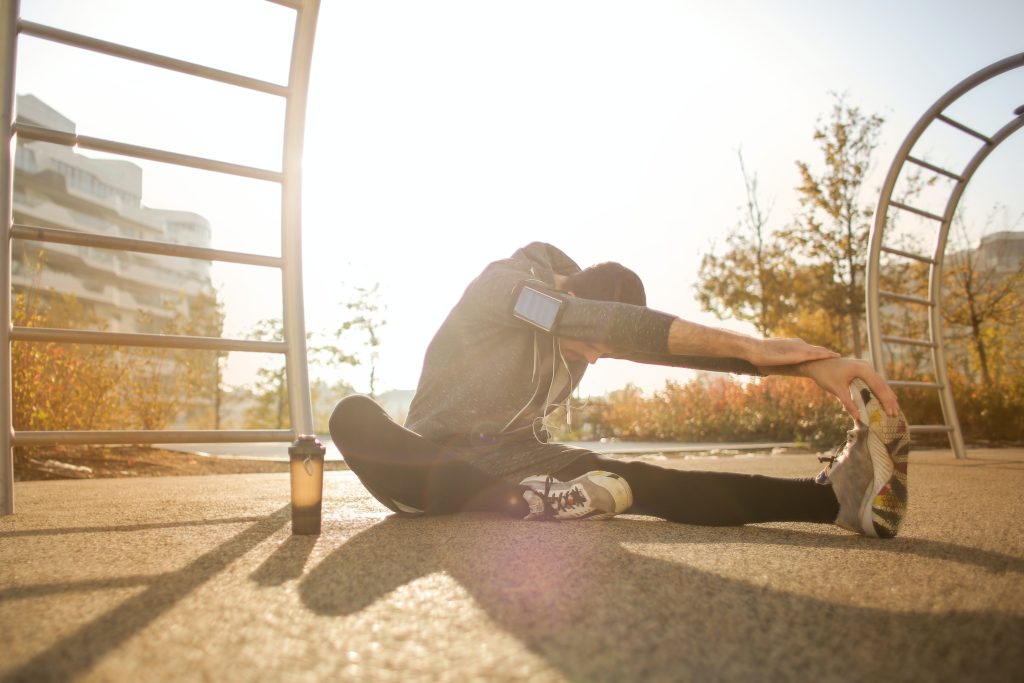
To do this easy hamstring stretch, sit on the ground or on a flat pad and extend your left leg straight out in front of you while you bend your right knee so that your right foot is just about flat against the inside of your left thigh. You’ll feel like you’re sitting half cross-legged and half with your legs straight ahead.
Then, reach forward and grab your left toe with both hands, if possible. Bend forward at your hips as far as you comfortably can, as if you’re trying to touch your forehead to your left leg.
After a few stretches on one side, switch your legs so the right leg is pointed out, and repeat the stretch.
Standing Hamstring Stretch
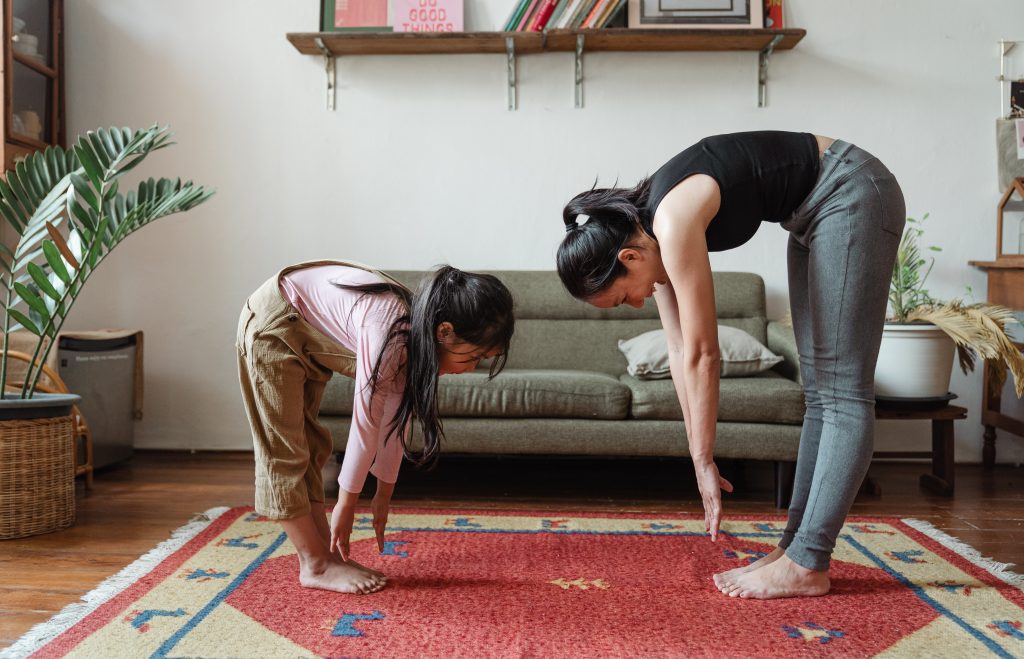
This one’s going to look like the classic toe touch stretch but with a twist.
While standing, cross one foot in front of the other and place both feet flat next to each other. Then, slowly bend at the waist and lower your head toward your knees. Count to 10 or 15 seconds while you keep your legs straight, and don’t forget to breathe.
Finally, raise yourself back to a normal standing posture slowly. If you tend to feel dizzy after standing up quickly, make sure you do this next to a wall or something sturdy to hold on to.
Alternative Seated Hamstring Stretch
If you don’t want to bend over and you feel uncomfortable sitting on the floor, you can stretch your hamstrings while sitting in a chair. You’ll need to pull up another chair or a sturdy object that’s about the height of a chair in front of you. Put one foot on the second chair so your leg is straight out in front. Then, slowly bend forward at the waist, moving your head and chest toward the straight leg.
Try to hold the stretch for a few seconds. Repeat it several times before switching legs.
Yoga Poses for Hamstring Tightness
You can also do some yoga poses to help loosen up tight hamstrings.
- Side lunge: Stand with your legs spread wide and your feet flat on the floor. Bend forward and place your fingertips on the ground. Then, slowly lean to the side, bending the knee of one leg while straightening the other.
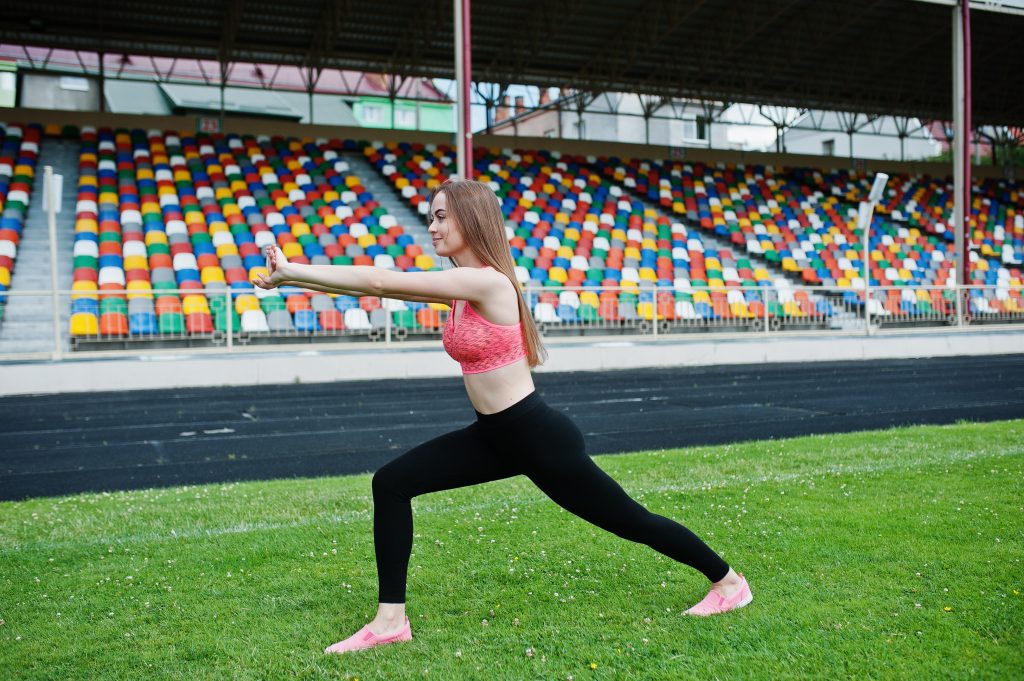
- Downward-facing dog: This pose starts on all-fours. With your hands and knees on the floor, raise your back until your head and back are in line with your arms. Then, try to slowly straighten your legs, keeping your back and arms straight and your feet flat on the floor. That’s when you’ll really feel the hamstring stretch.
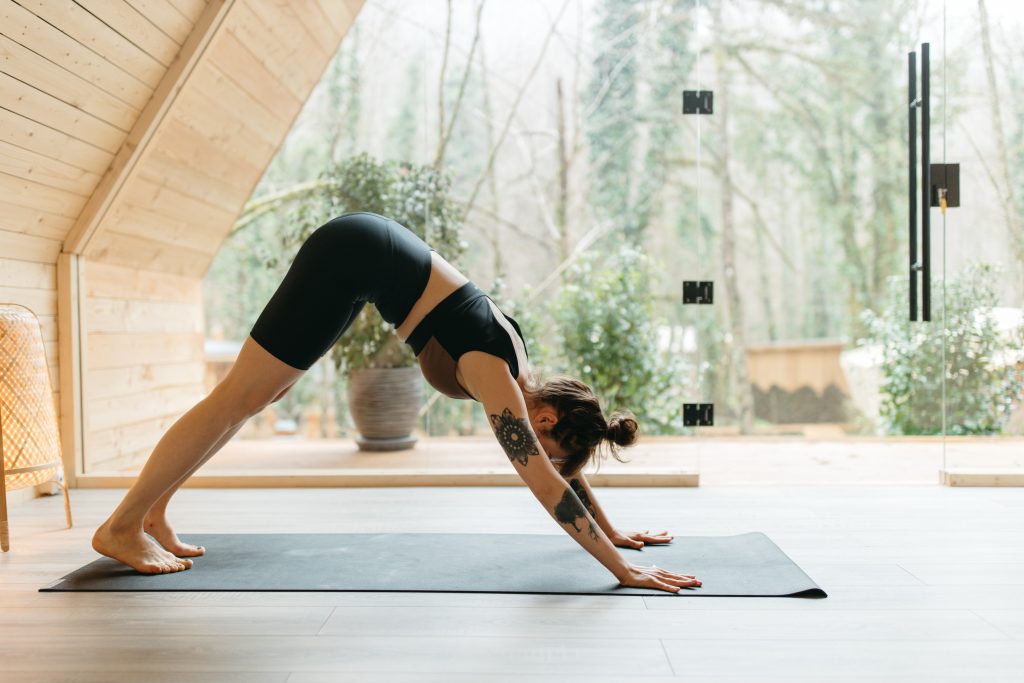
Other Ways to Protect Your Hamstrings
One of the most important ways you can protect your hamstrings from tightness and injury is to exercise them. Strengthening your hamstrings (and your glutes) helps prepare them for exertion—like when you need to run a race or just chase after the dog when she sneaks out the door.

Strengthening the surrounding muscles helps balance the effort so that your body isn’t relying too much on your hamstrings.
Glute bridges are a great exercise for strengthening your glute muscles and hamstrings. To do them, lie on your back on the floor or on a mat. Then, bend your knees so your feet are planted flat on the ground. Next, use your glute muscles to lift your butt and lower back off the ground while your shoulders stay flat on the floor.
Squeeze your glutes at the top—when your body is like a flat plank from shoulders to thighs. Finally, lower yourself back to the floor and repeat.
Resting between workouts is also important. Don’t overexert yourself, especially when you’re trying to strengthen weak hamstrings. It’s a long-term journey to build and strengthen muscles, not a quick fix.
Massage therapy is another effective way to relieve hamstring tightness. In a 2017 study in the Journal of Bodywork and Movement Therapies, massage therapy effectively increased participants’ hamstring flexibility.
A handheld massager is a useful tool for dealing with tight hamstrings. You can use it to penetrate deeper into muscle tissue than you could with your hands. These devices are portable and comfortable to hold, so it’s easy to give yourself a hamstring massage, along with static stretching. Alternatively, you can use a foam roller to massage your legs and help release hamstring tightness.
Unlock More Flexibility by Preventing Tight Hamstrings
Tight hamstrings are a common issue, and you don’t have to be an athlete to feel their effects. Relieving and preventing hamstring tightness takes a combination of exercise, regular stretching, and mindfulness of your posture. Practicing these stretches for tight hamstrings and avoiding hours of sitting can help your hamstrings feel more flexible.
Medical Disclaimer: This content is provided for informational purposes only and is not intended to be a substitute for professional medical advice, diagnosis, or treatment.

